Pholidoscelis exsul
—
Puerto Rican Giant Ameiva
Also known as:
Common Puerto Rican Ameiva, Puerto Rican Ground Lizard
The Caribbean species formerly included in genus Ameiva were split off into Pholidoscelis in 2017.
Subspecies I've seen:
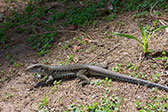
P. e. exsul
Puerto Rican Giant Ameiva
Pholidoscelis exsul exsul
—
Puerto Rican Giant Ameiva
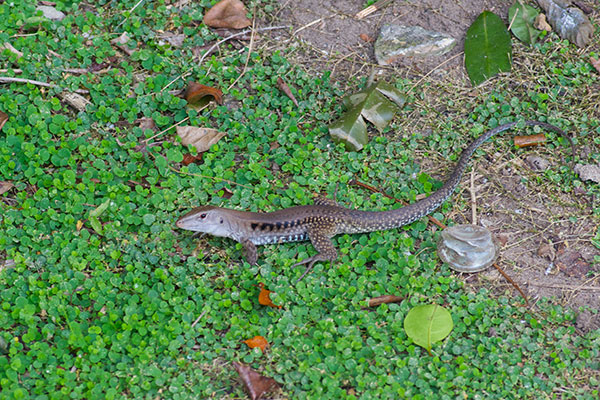
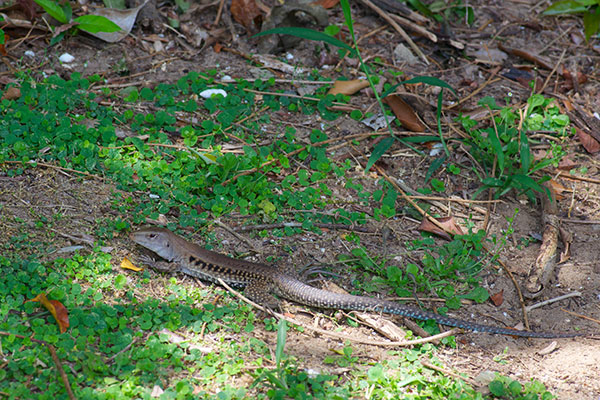

On one of the three days we spent in Puerto Rico before embarking on a cruise, we hired a local driver to show us some sights. We particularly wanted to see El Yunque National Forest, but made a few stops before and after. On the way there, we briefly visited the small cave named Cueva María de la Cruz. While the guide told us about the history of this site, I half paid attention and half poked around looking for herps. These ameivas were plentiful but difficult to approach.
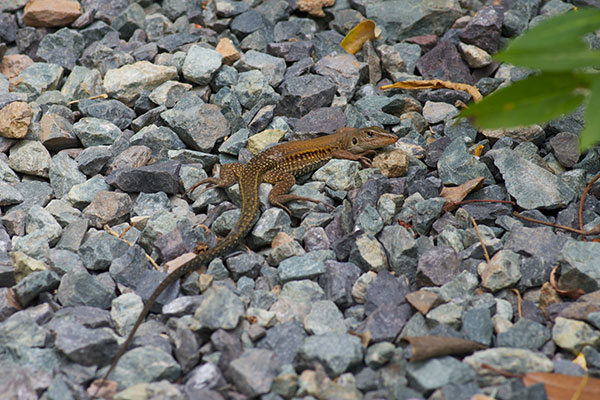
The U.S. Virgin Islands were probably connected to Puerto Rico during the last ice age, so the animals on St. Thomas are basically a subset of the animals on Puerto Rico. Some have diverged enough to be considered separate species or subspecies, but not so for Pholidoscelis exsul exsul.
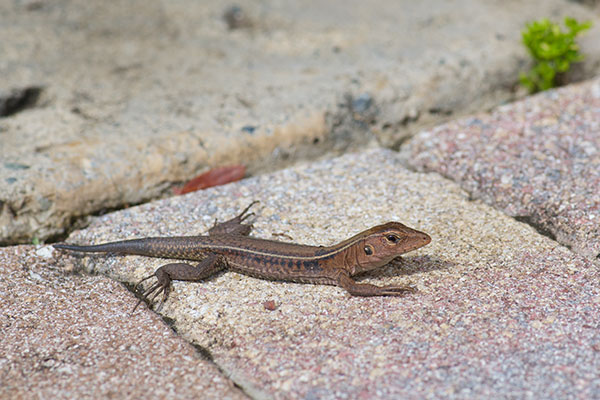
This youngster with a regenerated tail was basking in mid-afternoon outside of a small shop in town. Unlike the adults I had seen earlier on both St. Thomas and Puerto Rico, this guy wasn't wary at all. Perhaps that lackadaisical attitude got him into the trouble that led to the loss of his original tail.
Online references:
- Caribherp's list of reptiles and amphibians of each Caribbean island
- Derek B. Tucker, Stephen Blair Hedges, Guarino R. Colli, Robert Alexander Pyron, and Jack W. Sites, Jr, 2017. Genomic timetree and historical biogeography of Caribbean island ameiva lizards (Pholidoscelis: Teiidae)
Printed references:
- Schwartz, A., Henderson, R. W. 1985. A Guide to the Identification of the Amphibians and Reptiles of the West Indies Exclusive of Hispaniola
- Schwartz, A., Henderson, R. W. 1991. Amphibians and Reptiles of the West Indies: Descriptions, Distributions, and Natural History